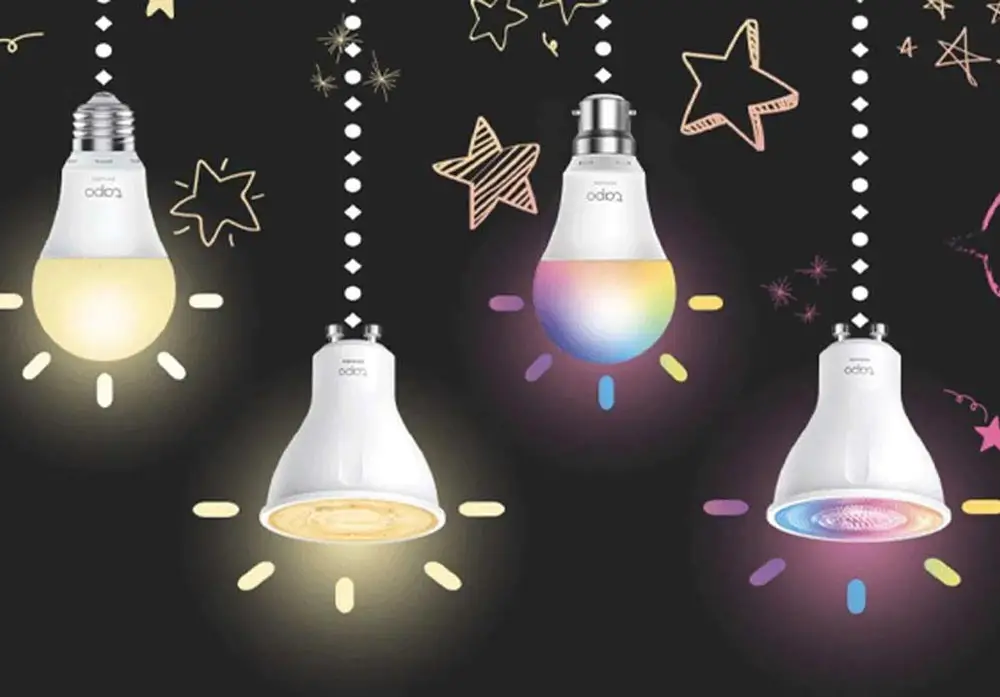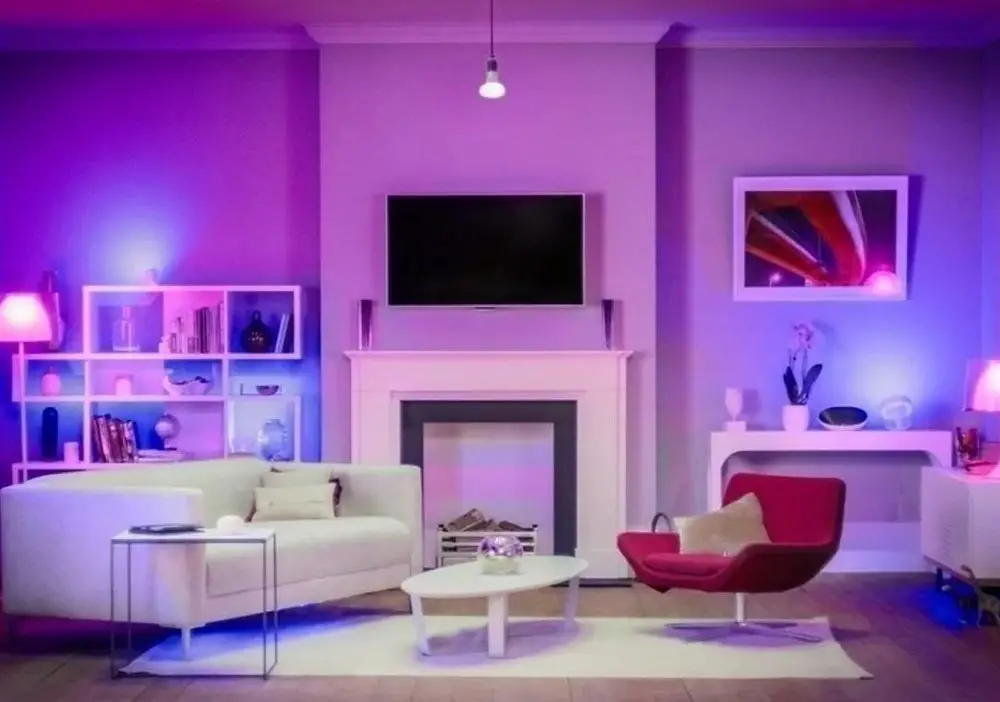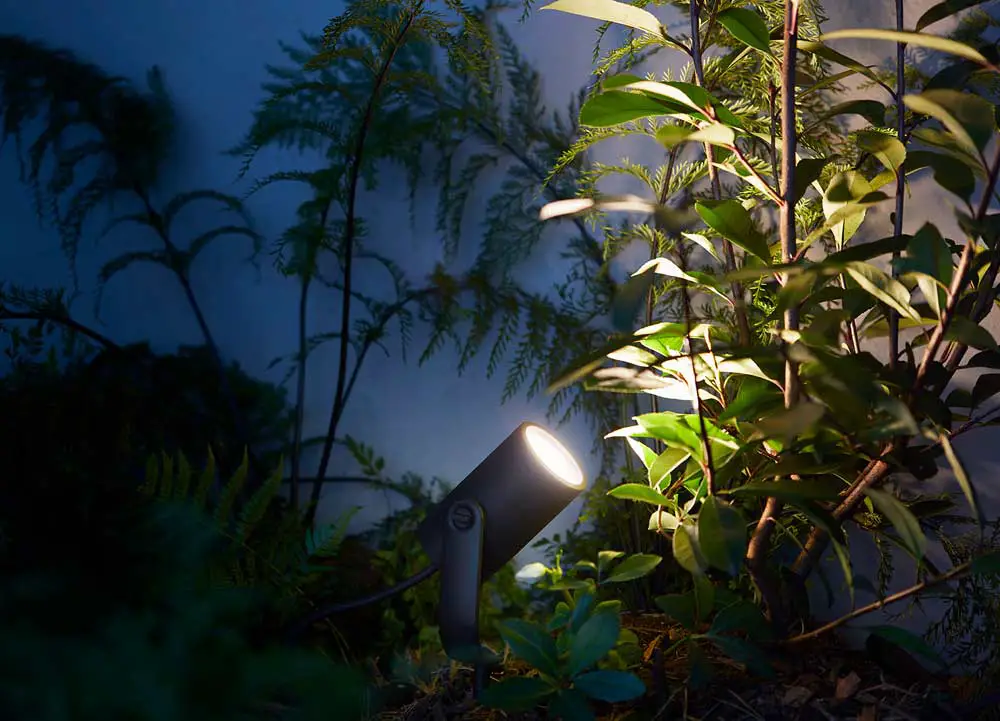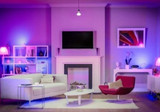Smart lighting goes beyond simply illuminating a space, it offers the power to control the ambience of any room at the touch of a button or via a simple voice command. Whether you're looking to enhance your home's energy efficiency, adjust lighting based on time of day, or simply set the mood for different activities, smart lighting technologies can make it happen.
With advancements in LED technology, app integration, and voice control, the options are limitless. From setting up scenes that react to your daily routines to integrating lights with other smart home devices for a seamless experience, the potential to elevate your living environment is immense.
Let's look deeper into my 7 smart lighting ideas, assured to reshape the way you think about and interact with the lighting in your home.
1. Smart Bulbs: The Basis of Smart Lighting

Image credit: warmzilla.co.uk
Smart bulbs are at the heart of any modern smart lighting system. Unlike ordinary light bulbs, they are highly customisable tools that can dramatically change the look and feel of your home with the swipe of a finger or a simple voice command.
What sets smart bulbs apart is their ability to connect to your home Wi-Fi or a smart home hub, allowing you to control them remotely, schedule their operation, and even adjust their colours and brightness to suit your mood or activity.
Whether you're looking for soft, warm light to relax under after a long day or vibrant, colourful displays for a party, smart bulbs can do it all. They come in various shapes and sizes, from standard bulbs to strips and even fixtures, each offering different levels of control and energy efficiency.
Integrating smart bulbs into your home is not just a convenience, it's also a way to embrace a more eco-friendly lifestyle while enhancing your living spaces in creative ways.
2. Innovative Placement of Smart Lights
When it comes to smart lighting, I believe that placement is everything. By thinking outside the traditional lamp and ceiling fixture box, you can use smart lights to highlight architectural features, illuminate workspaces, and even guide night-time navigation.
Smart lighting can be placed in areas where traditional lighting is often overlooked, such as under cabinets for a soft kitchen glow, along staircases for safety, or behind TVs and monitors for an ambient effect that reduces eye strain.
One particularly creative way to use smart lights is by installing LED strips under your bed. These can serve as useful night lights that automatically turn on when you step out of bed in the middle of the night.
Similarly, placing smart lights inside closets or drawers makes it easier to find what you’re looking for without turning on bright overhead lights. Even outdoors, smart lights can be strategically placed to enhance landscaping or provide security by lighting up walkways and entry points.
This is not a typical DIY project. It’s advisable to work with a fully qualified electrician, such as https://afterhourselectrical.com.au/, to ensure that you’re working safely and complying with local regulations.
3. Lighting Controls: Apps and Voice Commands
Gone are the days of fumbling for light switches in the dark. Today’s smart lighting is at your command, quite literally, through the convenience of apps and voice commands. By using your smartphone or a smart speaker, you can control every aspect of your home’s lighting without leaving your couch.
With a dedicated app, you have the power to dim the lights, switch them on or off, change colours, and even schedule lighting changes throughout the day − all from your phone. Imagine setting a gentle wake-up scene with gradually brightening lights for a peaceful morning. Or, preparing your home for your arrival by turning on the lights before you walk through the door.
Voice commands add another layer of convenience. Just say the word, and your digital assistant, whether it's Alexa, Google Assistant or Siri can make instant adjustments. Asking your assistant to “dim the living room lights” or “turn on the kitchen lights” makes managing your home's ambience as easy as having a conversation.
4. Setting the Mood with Smart Lighting

Image credit: gearbrain.com
Smart lighting is perfect for creating different moods and enhancing experiences. With the ability to adjust colour temperatures and brightness, you can tailor your lighting to fit any occasion or vibe.
Whether you’re hosting a dinner party, settling in for a movie night, or creating a calming ambiance for reading, smart lighting can transform your environment with just a few taps on your smartphone or a simple voice command.
Imagine adjusting your lights to a warm, soft glow to relax your guests or switching to vibrant colours for a festive atmosphere during a party. The possibilities are virtually endless.
I am a big film buff and during a movie, I like to dim the lights to mimic a theatre experience in my own living room. Alternatively, for those who struggle to wake up in the morning, a scheduled gradual increase in brightness can simulate a sunrise, making waking up more natural and pleasant.
5. Automating Smart Lights for Security

Image credit: hypebeast.com
Smart lighting is also a powerful tool for improving home security and energy efficiency in your home. Here are some innovative ways to automate your lighting system:
- Scheduled lighting: Set your lights to automatically turn on and off at specific times. This not only saves energy but also gives the impression that someone is always home, deterring potential intruders.
- Motion-activated lights: Install motion sensors that trigger your lights to turn on when activity is detected. This is great for security and helps save energy by ensuring lights aren't left on unnecessarily.
- Geo-fencing: Use geo-fencing to have your lights turn on as you approach your home and off when you leave. This smart use of technology ensures you never come back to a dark house and also cuts down on wasted electricity.
- Voice control integration: Integrate your smart lights with voice-controlled assistants. This allows for hands-free operation, which is perfect for both efficiency and accessibility.
- Sunset/Sunrise sync: Sync your lights with the natural light patterns of sunset and sunrise. Your lights can gradually brighten as dusk falls and dim as dawn breaks, providing a natural rhythm and saving energy.
6. Outdoor Smart Lighting
Outdoor smart lighting not only serves to illuminate your outdoor space, but extends the functionality of your home into the garden or back yard.
Here are some clever ways to use smart lighting outside:
- Pathway lighting: Strategically place smart lights along walkways, driveways, and garden paths. These can be set to light up as the sun sets or when they detect motion, ensuring safety and a warm welcome for visitors.
- Accent features: Use smart lights to highlight architectural features or key landscape elements like statues or large trees. This not only enhances your home's curb appeal but also adds a layer of security by illuminating dark corners.
- Zone lighting: Create different lighting zones in your backyard to support various activities, such as a brightly lit BBQ area, a dimmed ambiance for a seating area, and vibrant lights near play equipment.
- Event-based lighting: Program your outdoor lights to change colour or brightness based on specific events, like flashing gently during a backyard party or glowing in festive colours during the holidays.
7. Integration with Other Smart Home Devices
Integrating smart lighting with other devices in your home can create a seamless and intelligent living environment. Here’s how you can enhance your home’s functionality and comfort by connecting your smart lights with other gadgets:
- Smart thermostats: Connect your lights with your smart thermostat to create scenes that adjust both lighting and temperature simultaneously, optimising comfort and energy efficiency depending on the time of day or the number of people in a room.
- Security cameras: Link your smart lights with security cameras to increase home security. Set your lights to flash or turn on when unexpected motion is detected, potentially deterring intruders and alerting you to check your camera footage.
- Smart locks: Have your lights turn on to a welcoming brightness level when your smart lock activates as you arrive home. This provides convenience and safety as you enter your house.
- Home assistants: Sync your smart lights with voice-controlled home assistants for effortless control. Just a simple voice command can alter lighting to fit any occasion or need, from dimming lights for movie night to brightening them for a family gathering.
I am a big fan of integrating smart lights with other home devices as you can enjoy a more connected, convenient, and customised home environment.
My Final Thoughts
I don't want to overstate the benefits of Incorporating smart lighting into your home, but it doesn't just update your living space, it revolutionises it. From automating your indoor and outdoor lighting for security and efficiency to syncing with other smart devices for seamless functionality, the possibilities are wide and varied.
These innovative lighting ideas not only provide convenience and energy savings but also enhance the aesthetic appeal and safety of your home. However, there is one downside of smart lighting. Most smart lighting bulbs need to remain in standby mode to stay controllable, meaning they consume electricity even when they appear off through an app or remote. This can impact your energy savings.
As technology advances though, so does the potential to create a more connected and responsive living environment. Smart lighting is at the forefront of this transformation, offering customisable solutions that fit every lifestyle and home design.



 Author: Matthew Chiappini
Author: Matthew Chiappini